11 Best Improvements to Nine of Cups
/When we bought Nine of Cups in February 2000, we bought her because (1) she was a blue water boat and (2) it was love at first sight, but she'd really only done coastal sailing, so she wasn't equipped for ocean passages. As our experience and confidence grew, we added improvements that would make Cups and us safer, more self-reliant and more energy efficient. Here's our list of the 11 best improvements we've added to Cups over the years. Wind generators
It didn't take us long to realize that taking advantage of the wind to generate energy was as important as filling the sails. We initially bought two Four Winds wind generators and David built stainless steel “goal posts” on the stern to mount them. The salesman sold us some extra gear, like a brake, that we used once or twice and then ignored. After 15 years, we're down to one wind generator. Four Winds has gone out of business and we have cannibalized the second wind gen to keep one functioning and producing. Newer wind gens are certainly more efficient and when our current one finally bites the dust, we'll most probably replace it.
Solar Panels
At the same time we purchased our wind generators, we also purchased and mounted three 80 w solar panels. Though not as efficient as newer models, these solar panels continually produce significant energy. It's nice to watch a movie or use our computers without worrying about starting the engine.
Watermaker
In the USA, obtaining potable, drinkable water at any fuel stop or marina along the coast is easy. In many countries, however, water is either expensive or not drinkable. We've both suffered from some type of “Montezuma's Revenge” over the years and don't relish the thought. Additionally, carrying enough fresh water aboard for an ocean passage takes some planning and significant water tank storage. We purchased our Pur watermaker more than a decade ago, but it's still pumping good water and filling our tanks. Though Pur is now owned by Katadyn, parts are still available. Good investment.
HF Radio/SailMail
Sat phones, as we know them today, were not economically feasible when we first started out. Instead, we purchased an HF radio/SSB and subscribed first to WinLink and later on to SailMail. Having the ability to send and receive weather transmissions and emails while at sea was and is a wonderful way to stay in touch … especially on those long, long trans-ocean passages. With the new sat phone systems available, like the GO, I think we'd consider going that route versus the HF radio, but since we already have the SSB aboard, we'll stick with it.
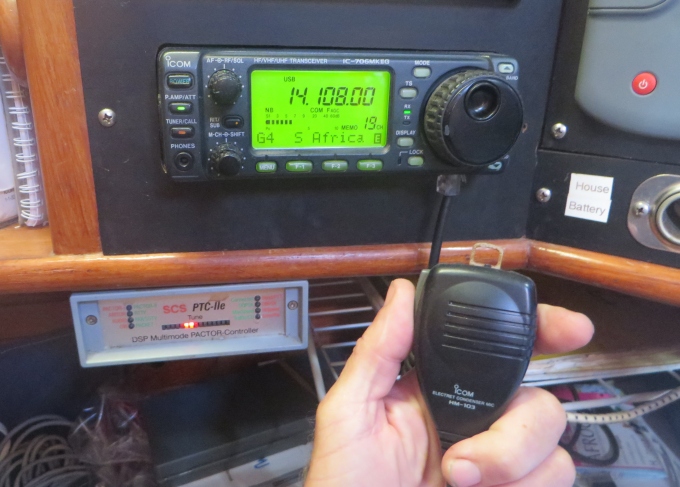
Chartplotter
In 2007, we moved our friend's boat from Ushuaia, Argentina to a marina in Uruguay. We were accustomed to plotting our course manually on paper charts which takes up considerable time and space. Noel had a chartplotter aboard and we found it to be absolutely wonderful. When we returned to Cups, we purchased a Raymarine chartplotter and still use it. It's installed at the nav station down below, however, which made it convenient for plotting a course, but very inconvenient to see where we actually were and where we were heading. Since we were traveling around the world, we also found the cost of the Navionics regional marine chart cards at $300-350 each were quite expensive. We purchased an iPad a couple of years ago and then appropriate Navionics chart apps. We now have a portable repeater in the cockpit and the cost of the charts is 20% of the CF cards for the chartplotter. We've also purchased an extra iPad … just in case. Plotting and navigating was never so easy.
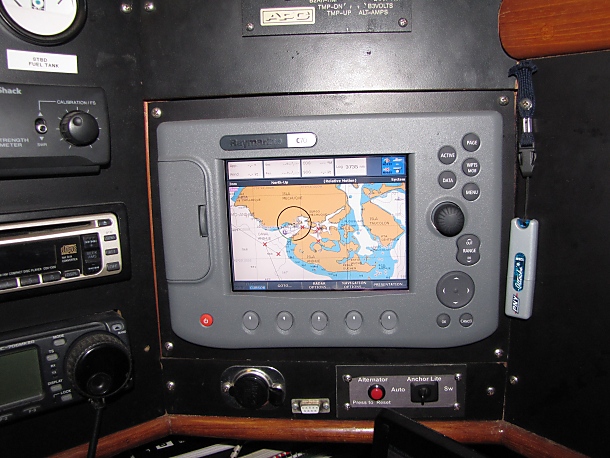
AIS (Automatic Identification System)
The Automatic Identification System (AIS) is an automatic tracking system used on ships for identifying and locating vessels. We use it primarily to see what ships are nearby and to contact them to make sure they see us and avoid running us over. The AIS has saved our bacon many times and also made us more aware of just how much ship traffic is really out there. We have a passive system incorporated into our VHF radio, i.e. we can see the ships, but Nine of Cups sends no identifying signal to them. An active system is on the wish list whereby nearby ships would see us as well.

Cockpit VHF Repeater
We always had a VHF radio aboard for contacting other boats, authorities and marinas, but it was always below at the nav station and we many times missed hails and found it inconvenient to hail others. We used a handheld VHF, but it has a limited range. A few years ago, we bought a Raymarine repeater for the cockpit. It is convenient to use and we can easily hear radio traffic, warnings and listen to weather while we're topside.
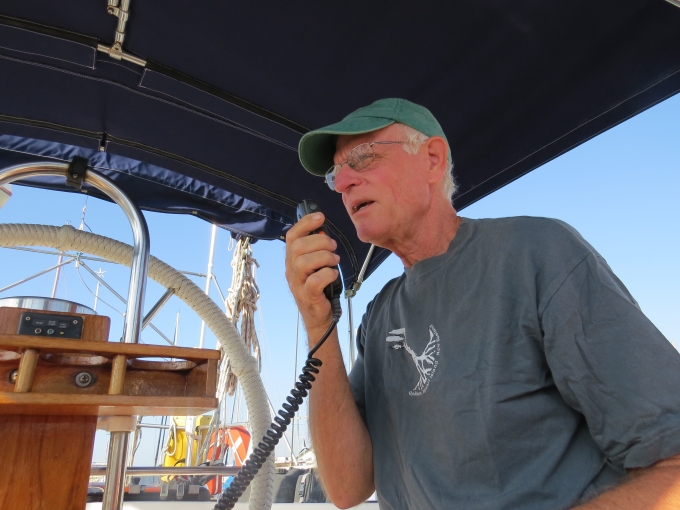
Heavy duty anchor
One form of insurance on a boat is heavy-duty ground tackle. We agreed from the beginning that we needed a big, heavy, solid anchor. We initially bought a Bruce claw and then switched to a Manson Boss over a decade later when we had problems in the hard sandy, grassy bottoms of southern Australia. We still have four anchors aboard for different types of situations, but we rely on the 80# Boss as a primary insurance for keeping Cups put.
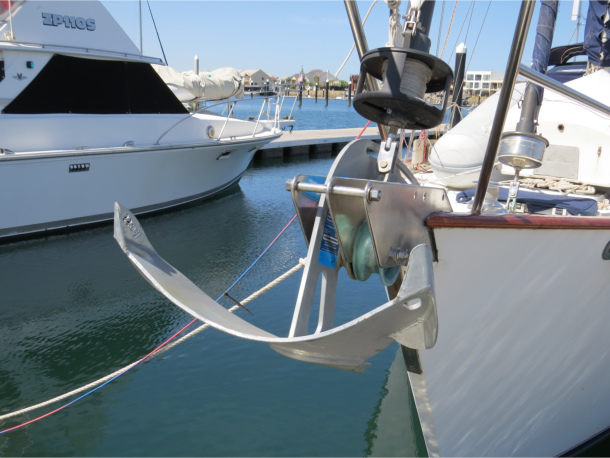
Lazy Jacks
As we've aged over the past 15 years, we found it helpful to add conveniences to Cups. We added lazy jacks few years ago and it's been a great help. The lazy jacks “contain” the mainsail when we're taking it down, allowing us to just drop it and tidy up and add the sail ties later. There are lots of different lazy jack and stack-pack options out there, but David devised his own economical approach which works just fine for us.
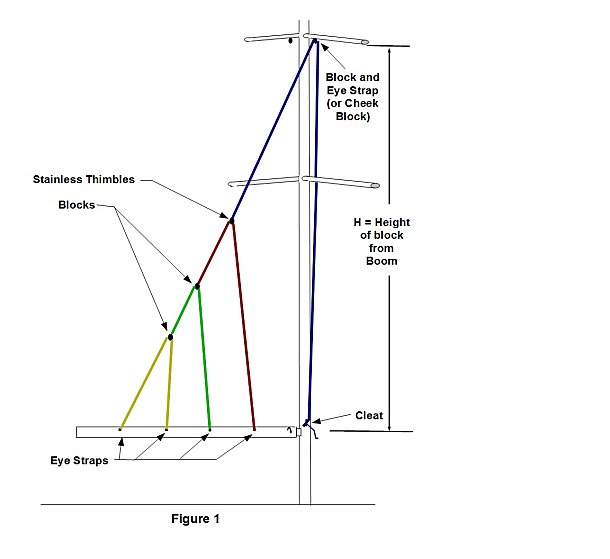
Prop Shaft Generator
David has been working on the prop shaft generator in stages since we left New Zealand in 2011. He discussed the concept initially with our friend Eric Forsyth on Fiona. More discussions were conducted with our Canadian mechanical engineer friend, Claude on Azzar. Calculations were made, parts were fabricated and/or purchased and installed. Finally, when we were leaving Cape Town, Africa, the generator was ready to go. I was a doubting Thomas, I admit, but what a difference it made in our overall energy production. We could go weeks without turning on the engine. Great improvement!!
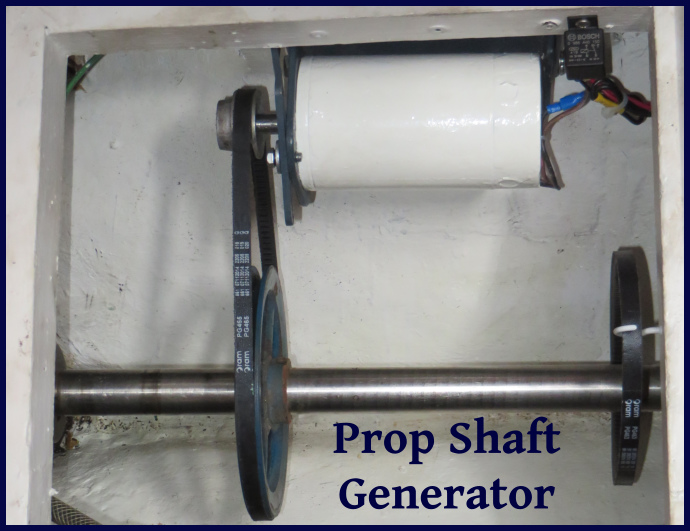
Alternate energy monitor
Having several ways to generate power aboard is great, but it's also good to know just what system … solar, wind or prop shaft … is doing its job and generating the most power. David's Alternate Energy Monitor was a great project to keep the captain amused on an ocean passage, but proved to be an outstanding addition to Cups.

What sort of improvements have you made to your boat that you're glad you made? Why?
What's on your wish list?

